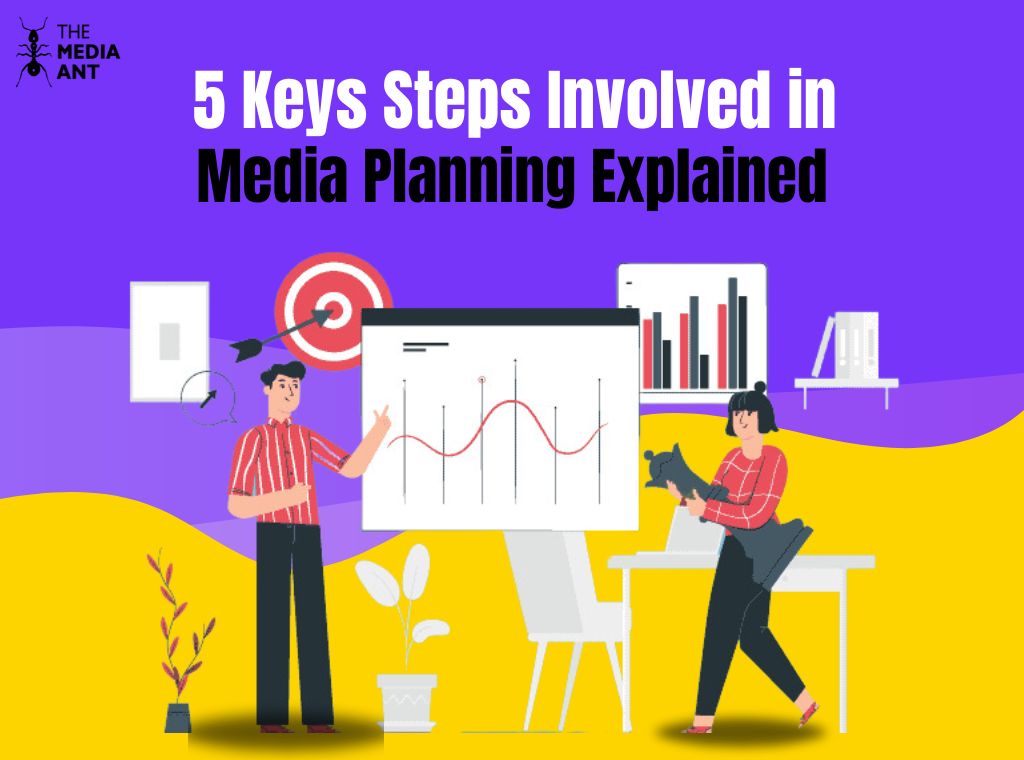What is Media Planning?
Media planning is the strategic process of determining the best way to communicate a marketing message to a target audience. It involves selecting the most appropriate media channels—such as TV, radio, print, and digital platforms—to maximize the reach and impact of an advertising campaign. The goal is to ensure the right message reaches the right people at the right time, all within a set budget. Effective media planning requires a deep understanding of the target audience, careful allocation of resources, and continuous monitoring to optimize performance and achieve marketing objectives.
What does a Media Planner do?
A media planner is a strategic professional in the advertising and marketing industry responsible for selecting the best media platforms to deliver a brand’s message to its target audience.
- Identify Target Audiences: Research and define the ideal consumer groups.
- Choose Media Channels: Select the best platforms (TV, radio, print, online) to reach the audience.
- Create Media Strategies: Develop plans outlining how and when ads will run.
- Allocate Budgets: Distribute the budget effectively across chosen channels.
- Negotiate Ad Rates: Secure the best prices and placements with media vendors.
- Schedule Ads: Plan optimal timings for ad placements.
- Monitor Campaigns: Track performance and make adjustments as needed.
- Collaborate with Teams: Work with creative and marketing teams for cohesive campaigns.
- Report Results: Provide insights and performance reports to stakeholders.
Types of Media Planning
- Broadcast Media Planning: Focuses on television and radio channels.
- Print Media Planning: Involves newspapers, magazines, and other print publications.
- Digital Media Planning: Encompasses online platforms including websites, social media, and streaming services.
- Out-of-Home (OOH) Media Planning: Covers billboards, transit ads, and point-of-sale displays.
- Direct Mail Media Planning: Involves sending physical promotional materials directly to consumers’ addresses.
- Event and Experiential Media Planning: Focuses on live events, sponsorships, and brand experiences.
- Mobile Media Planning: Targets audiences through mobile devices and apps.
- Influencer Media Planning: Collaborates with social media influencers and content creators.
- Cinema Media Planning: Involves advertising in movie theaters through on-screen ads and lobby displays.
- Audio Media Planning: Focuses on podcast ads and music streaming services.
What are the 5 Steps of a Media Plan
1. Market Analysis
- Identify Target Audience: Understand demographics, psychographics, and behavior.
- Evaluate Market Trends: Analyze industry trends, competitor strategies, and market conditions.
- SWOT Analysis: Assess strengths, weaknesses, opportunities, and threats related to the media plan.
2. Set Objectives
- Define Goals: Establish clear, measurable objectives (e.g., brand awareness, lead generation, sales increase).
- SMART Criteria: Ensure objectives are Specific, Measurable, Achievable, Relevant, and Time-bound.
- Budget Allocation: Determine the budget and allocate resources accordingly.
3. Media Strategy Development
- Select Media Channels: Choose the appropriate media platforms (e.g., TV, radio, digital, print) based on the target audience.
- Media Mix: Develop a mix of channels to maximize reach and frequency.
- Content Strategy: Plan the type of content and messaging that aligns with the campaign goals.
4. Implementation and Execution
- Media Buying: Purchase ad space and time on selected media channels.
- Creative Development: Create and produce advertisements or content.
- Scheduling: Plan the timing and frequency of ads to optimize impact.
5. Monitoring and Evaluation
- Track Performance: Use analytics and metrics to monitor campaign performance against objectives.
- Adjust and Optimize: Make data-driven adjustments to improve effectiveness.
- Reporting: Compile and analyze data to report on the campaign’s success and learnings for future planning.
FAQs Related to Steps in Media Planning
What are the different types of media planning?
The different types of media planning are Traditional Media Planning, Digital Media Planning, Integrated Media Planning, Tactical Media Planning and Strategic Media Planning.
What are the elements of media planning?
Elements of media planning include target audience, media objectives, media mix, media budget, media schedule, reach and frequency, measurement and evaluation.
What is the structure of media planning?
The structure of media planning involves several key steps: starting with a situation analysis to understand the market, competition, and target audience. Next, clear and measurable media objectives are set. A strategy is then developed, selecting appropriate media channels to achieve these objectives. Implementation follows, where the media plan is executed through media buying and placements. Finally, the results are evaluated to assess the effectiveness of the plan, and adjustments are made as necessary to optimize future campaigns.
What is the first step in the media plan?
The first step in the media plan is conducting a market analysis, which involves researching and understanding the target audience, market conditions, competitive landscape, and media consumption habits.





